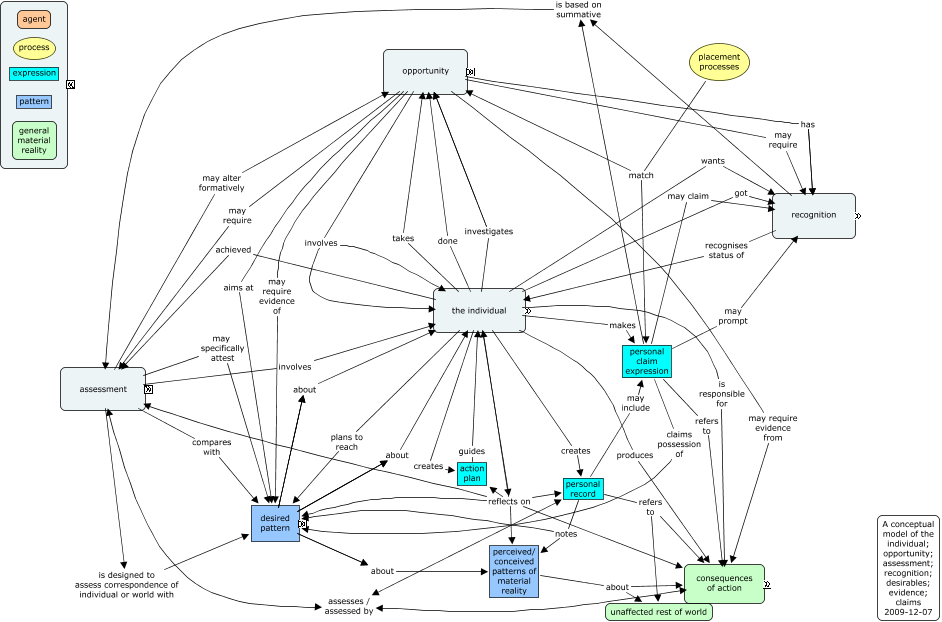This conceptual model now includes basic ideas about what goes on in the individual, plus some of the most important concepts for PDP and e-portfolio use, as well as the generalised formalisable concepts processes surrounding individual action. It has come a long way since the last time I wrote about it.
The minimised version is here, first… (recommended to view the images below separately, perhaps with a right-click)

and that is complex enough, with so many relationship links looking like a bizarre and distorted spider’s web. Now for the full version, which is quite scarily complex now…

Perhaps that is the inevitable way things happen. One thinks some more. One talks to some more people. The model grows, develops, expands. The parts connected to “placement processes” were stimulated by Luk Vervenne’s contribution to the workshop in Berlin of my previous blog entry. But — and I find hard to escape from this — much of the development is based on internal logic, and just looking at it from different points of view.
It still makes sense to me, of course, because I’ve been with it through its growth and development. But is there any point in putting such a complex structure up on my blog? I do not know. It’s reached the stage where perhaps it needs turning into a paper-length exposition, particularly including all the explanatory notes that you can see if you use CmapTools, and breaking it down into more digestible, manageable parts. I’ve put the CXL file and a PDF version up on my own concept maps page. I can only hope that some people will find this interesting enough to look carefully at some of the detail, and comment… (please!) If you’re really interested, get in touch to talk things over with me. But the thinking will in any case surface in other places. And I’ll link from here later if I do a version with comments that is easier to get at.
Pingback: More competency | Simon Grant of CETIS
Pingback: ICOPER and outcomes | Simon Grant of CETIS